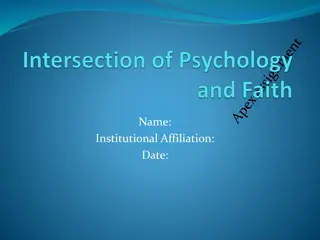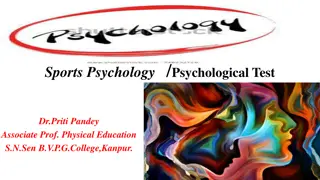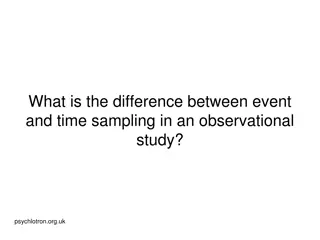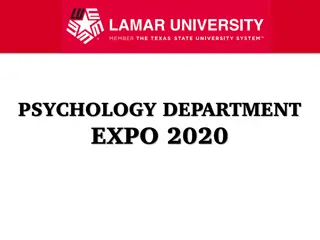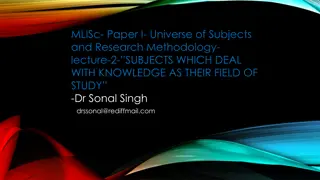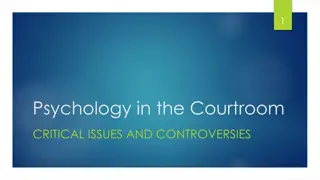
Different Types of Happiness: A Psychological Perspective
Explore the complexities of happiness through the lenses of psychology, philosophy, and culture. Discover the various types of happiness, including the pleasure-based (hedonic) and meaning-based (eudaimonic) forms, as well as the PERMA model by Martin Seligman. Dive into the nuances of positive emotion and learn how it contributes to overall well-being and fulfillment.
Download Presentation

Please find below an Image/Link to download the presentation.
The content on the website is provided AS IS for your information and personal use only. It may not be sold, licensed, or shared on other websites without obtaining consent from the author. If you encounter any issues during the download, it is possible that the publisher has removed the file from their server.
You are allowed to download the files provided on this website for personal or commercial use, subject to the condition that they are used lawfully. All files are the property of their respective owners.
The content on the website is provided AS IS for your information and personal use only. It may not be sold, licensed, or shared on other websites without obtaining consent from the author.
E N D
Presentation Transcript
HAPPINESS Dr. Priyanka Gautam Assistant Professor Department of Psychology Deen Dayal Upadhyaya Gorakhpur University, Gorakhpur
Happiness is a complex, multifaceted emotion that can be understood in different ways depending on philosophical, psychological, perspectives. At its core, happiness generally refers to a state of well-being, contentment, or joy. It can involve both temporary feelings of pleasure and long- term satisfaction with one's life. and cultural
TYPES OF HAPPINESS Happiness is a complex and multifaceted emotion, and different psychological theories classify and describe it in various ways. Here are some common types of happiness that people might experience: 1. Hedonic Happiness (Pleasure-Based Happiness) Definition: This type of happiness is centered around the pursuit of pleasure and the avoidance of pain. It is often referred to as "pleasure" or "feeling good." Key Features: Immediate gratification, enjoyment, sensory pleasure, and positive emotions. Psychological Basis: Rooted in hedonism, which emphasizes the maximization of pleasure and the minimization of suffering. Examples: Enjoying a good meal, going on a vacation, or having a fun night out with friends. Focus: Momentary joy and physical satisfaction.
EUDAIMONIC HAPPINESS (MEANING-BASED HAPPINESS) Definition: Eudaimonic happiness is about living a life of meaning, purpose, and personal growth. It's not just about feeling good in the moment but about engaging in activities that are fulfilling in the long term. Key Features: Self-actualization, personal growth, meaning, contribution to society, and aligning one s actions with core values. Psychological Basis: Based on Aristotle s concept of eudaimonia, which is living in accordance with one's true nature and striving for human flourishing. Examples: Pursuing a meaningful career, helping others, engaging in creative activities, or making a positive impact on the world. Focus: Long-term fulfillment, purpose, and living authentically
THE PERMA MODEL (BY MARTIN SELIGMAN) Martin Seligman, a founder of positive psychology, proposed a framework for well-being known as the PERMA model. This model highlights five key components that contribute to happiness and flourishing: Positive emotion (experiencing joy and contentment) Engagement (being absorbed in activities) Relationships (having meaningful, supportive connections) Meaning (living with purpose) Accomplishment (achieving goals)
A. POSITIVE EMOTION A. POSITIVE EMOTION Definition: Experiencing pleasant emotions like joy, gratitude, love, and optimism. Positive emotions are the foundation of happiness. Key Features: Experiencing positive feelings in the moment and cultivating an optimistic outlook. Examples: Feeling gratitude, experiencing joy in a happy moment, or savoring a relaxing experience. Focus: The immediate feeling of happiness and joy.
CONTD B. Engagement (Flow) Definition: Engagement refers to the feeling of being fully absorbed and immersed in an activity, often leading to the experience of flow. Key Features: Deep involvement in an activity where time seems to stand still, skills are matched with challenges, and there s a sense of mastery and concentration. Examples: A musician in the middle of a performance, an athlete in the zone, or an artist completely immersed in their creative process. Focus: Deep immersion and enjoyment in activities that challenge your skills.
CONTD C. Relationships (Positive Social Connections) Definition: Happiness is strongly influenced by meaningful social connections. Having supportive, loving relationships contributes significantly to overall well-being. Key Features: Strong bonds, trust, social support, and a sense of belonging. Examples: Having close friends, family connections, or being part of a community. Focus: Quality social relationships that provide emotional support and belonging.
CONTD D. Meaning Definition: Living a life with meaning and purpose is a core element of happiness. This refers to the sense of being part of something larger than oneself and contributing to the greater good. Key Features: Feeling that one s life has purpose, contributing to others, and aligning one s life with personal values or a higher cause. Examples: Volunteering, pursuing a career that aligns with your values, or participating in a cause you care about. Focus: Living with purpose and contributing to something beyond oneself.
CONTD E. Accomplishment (Achievement) Definition: Achievement and mastery of goals are important for well-being. This component emphasizes setting and achieving goals that lead to a sense of accomplishment. Key Features: Striving for and achieving personal or professional goals, a sense of competence, and feeling successful. Examples: Completing a challenging project, getting a promotion, or achieving a personal milestone. Focus: Achievement, goal-setting, and mastery of tasks.
SOCIAL HAPPINESS RELATIONSHIPS) (HAPPINESS FROM Definition: Social happiness focuses on the role of social relationships in happiness and well-being. Humans are inherently social beings, and supportive, meaningful relationships contribute significantly to happiness. Psychological Basis: Positive psychology and attachment theory highlight how social bonds, social support, and feelings of belonging enhance emotional well-being. Key Features: Loving, supportive relationships, social connection, and community. Examples: Spending time with close friends, family gatherings, or being part of a community group.
GRATITUDE AND HAPPINESS GRATITUDE AND HAPPINESS Definition: Gratitude is an emotional state characterized by recognizing and appreciating the positive aspects of life. It is often linked to improved happiness and well-being. Psychological Basis: Research by Robert Emmons and others has shown that practicing gratitude leads to increased positive emotions and overall life satisfaction. Key Features: Acknowledging good things in life, cultivating thankfulness, and focusing on the present moment. Examples: Keeping a gratitude journal, thanking others, or simply taking time to reflect on the positive aspects of your life.
CONCLUSION CONCLUSION Happiness is understood as more than just a transient emotional state. It encompasses multiple dimensions, ranging from immediate pleasure (hedonic happiness) to deeper fulfillment through purpose and meaning (eudaimonic happiness). It aim to understand how people can lead happier, more fulfilling lives through a combination of pleasant experiences, personal growth, and strong social connections. By examining these different types of happiness, psychology provides valuable insights into how individuals can achieve well-being and live satisfying lives.
HIERARCHY OF HAPPINESS Pleasure (Immediate satisfaction) Transcendent Happiness (Selflessness and universal connection) Contentment (Stability and security) Joy (Flow and positive emotion) Eudaimonic Happiness (Self- actualization and personal growth) Meaning (Purpose and fulfillment)
References: Aristotle. (350 B.C.E.). Nicomachean Ethics (translated by W. D. Ross). Diener, E. (1984). Subjective well-being. Psychological Bulletin. Csikszentmihalyi, M. (1990). Flow: The psychology of optimal experience. Kahneman, D., Diener, E., & Schwartz, N. (1999). Well-Being: The Foundations of Hedonic Psychology. Russell Sage Foundation. Ryan, R. M., & Deci, E. L. (2000). Self-determination theory and the facilitation of intrinsic motivation, social development, and well-being. American Psychologist. Seligman, M. E. P. (2011). Flourish: A visionary new understanding of happiness and well- being. Free Press.



